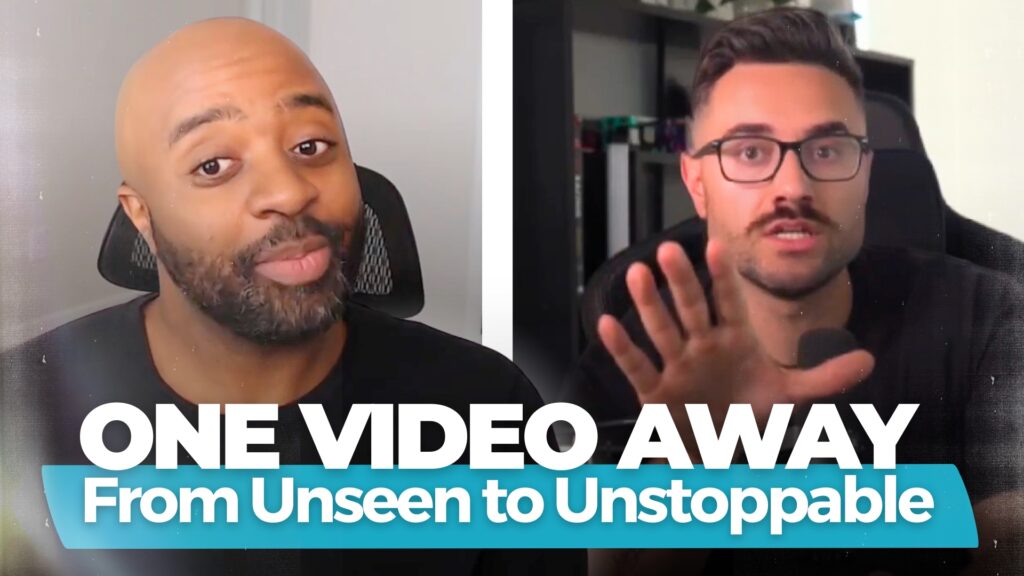
Stop trying to be the niche—and start serving one.
That’s the mic-drop insight from creator and strategist Enrico Incarnati, who’s spent years helping entrepreneurs and personal brands cut through the noise online. In a content world obsessed with authenticity, many creators have internalized the mantra “you are the niche”—but Enrico says that mindset may be the very thing keeping you stuck.
This article breaks down why that popular advice is misleading, especially if you’re trying to turn attention into income. We’ll walk through Enrico’s 3-layer funnel framework: interest → skill → expertise, and explain how shifting your social media niche strategy can transform your followers from passive scrollers into paying clients.
[RELATED] Enrico Incarnati | ConvoRoom Podcast – Season 02, Episode 01

The Problem with “You Are the Niche”
Let’s be clear: building a personal brand matters. Your story, voice, and unique perspective help create connection. But somewhere along the way, a generation of creators mistook sharing their lives for building a business.
According to Enrico, that’s the disconnect.
“You’re not the niche,” he says. “The niche is the audience you serve. You’re the messenger.”
When you make yourself the niche, your content becomes a personality parade. One week it’s a ‘day in my life,’ the next it’s your coffee order, then it’s vague motivation or a random launch. And while those pieces might rack up likes, they don’t build trust or teach anyone why they should hire you, buy from you, or refer you.
Why? Because the audience doesn’t know what you do.
This confusion leads to low conversion rates, brand inconsistency, and a whole lot of burnout. Enrico’s advice: Get out of your own head and into your audience’s.
The 3-Layer Funnel: Interest → Skill → Expertise
To fix this, Enrico lays out a simple but powerful framework that maps your content to how people actually find, follow, and trust you.
#1: Interest
This is your entry point—relatable, lightweight content that captures attention.
Think:
- “Signs you’re burnt out and don’t know it”
- “This is why your to-do list keeps growing”
This top-of-funnel content isn’t selling anything—it’s opening a conversation. It’s how people discover you without knowing they need you (yet).
#2: Skill
This middle layer positions you as someone who knows what they’re doing. You’re not just interesting—you’re useful.
Examples:
- “3 systems I use to save 5 hours a week”
- “What to say in a client proposal (with examples)”
This is where you show your audience what you’re capable of and start building trust. People begin to see you as a helpful guide, not just a content creator.
#3: Expertise
Now it’s time to lead. This is your authority layer.
Think:
- “How I helped a client 5x their revenue using this simple funnel”
- “Why your content isn’t converting—and how to fix it”
This is where the money is made. You’re not just teaching or entertaining—you’re positioning yourself as the solution. By the time someone is engaging with this type of content, they know they need help—and they’re wondering if it should be you.
Why This Framework Converts
This approach works because it mirrors how people build trust online.
First, they need to know you exist (interest). Then they need to believe you can help (skill). Finally, they need to trust you enough to pay you (expertise).
By focusing your content across these layers, you naturally guide your audience through a journey—one that doesn’t require you to be a constant entertainer or over-sharer. Instead, you become a strategic guide to a very real transformation.
That’s what builds a brand with staying power.
How to Apply This to Your Content Strategy
If your content feels scattered or inconsistent, ask yourself:
- What problem do I solve?
- Who is already searching for that solution?
- What’s keeping them from acting?
From there, plan your content by layer:
- Top-of-funnel (Interest): Use trends or relatable scenarios to hook attention.
- Mid-funnel (Skill): Teach and showcase your value through quick wins.
- Bottom-funnel (Expertise): Case studies, bold takes, or offer breakdowns.
Remember: your personality supports the niche—but it’s not the niche itself.
You don’t have to share everything. You don’t need a perfectly curated aesthetic. What you need is clarity about who you help and how you help them.
Final Word: Clarity > Charisma
Enrico’s take isn’t about dulling your shine—it’s about aiming it.
Yes, your story matters. But for creators trying to build sustainable income online, the key to growth isn’t being interesting. It’s being valuable—consistently, strategically, and with your audience’s needs front and center.
So next time you hear someone say “you are the niche,” smile politely—and then go build content that serves one.







